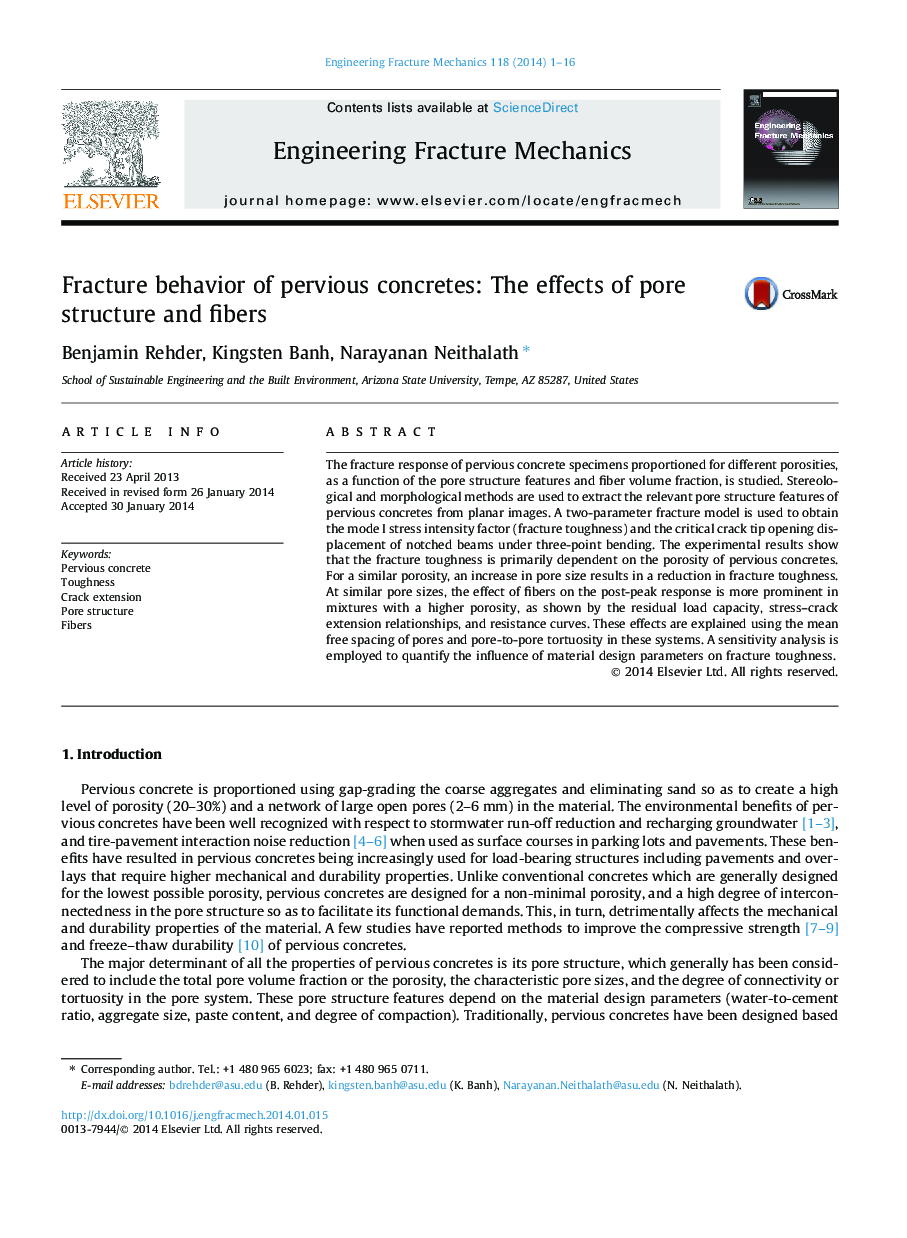| Article ID | Journal | Published Year | Pages | File Type |
|---|---|---|---|---|
| 766924 | Engineering Fracture Mechanics | 2014 | 16 Pages |
•Studied the influence of pore structure (porosity, sizes, tortuosity) and fibers on fracture response of pervious concretes.•Porosity is the primary characteristic influencing toughness.•Fibers are more influential at higher porosities.•Influence of fibers at large crack extensions, independent of porosity within the studied range.
The fracture response of pervious concrete specimens proportioned for different porosities, as a function of the pore structure features and fiber volume fraction, is studied. Stereological and morphological methods are used to extract the relevant pore structure features of pervious concretes from planar images. A two-parameter fracture model is used to obtain the mode I stress intensity factor (fracture toughness) and the critical crack tip opening displacement of notched beams under three-point bending. The experimental results show that the fracture toughness is primarily dependent on the porosity of pervious concretes. For a similar porosity, an increase in pore size results in a reduction in fracture toughness. At similar pore sizes, the effect of fibers on the post-peak response is more prominent in mixtures with a higher porosity, as shown by the residual load capacity, stress–crack extension relationships, and resistance curves. These effects are explained using the mean free spacing of pores and pore-to-pore tortuosity in these systems. A sensitivity analysis is employed to quantify the influence of material design parameters on fracture toughness.
